S a l t a r ' s P o i n t P r e s s
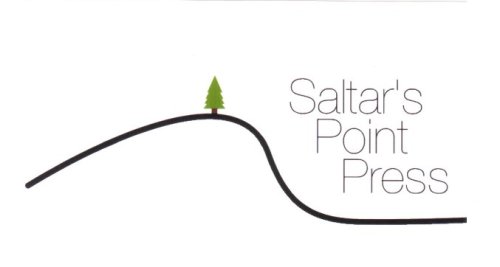
Today's rapidly evolving publishing environment now makes it possible for writers and editors to distribute high-quality, carefully produced books directly to their readers. Saltar's Point is an independent press dedicated to preparing a series of teaching texts designed for classroom use. Each volume includes an introduction aimed at engaging the student reader, a thoughtfully edited and thoroughly annotated text, and a useful bibliography that includes sources for further reading. Each volume is presented with attention to detail, readability, and accessibility. Each volume represents a labor of love--for the original writer, for the enduring significance of her work, and for the process of teaching and learning.
A New Edition of Margaret Cavendish's The Female Academy
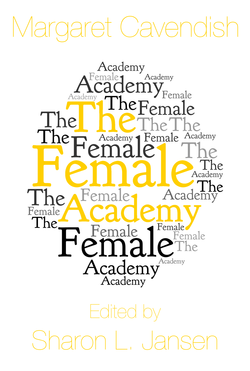
When Margaret Cavendish published her first collection of dramatic work in 1662, she was keenly aware that none of her comedies or tragedies was unlikely to be acted, at least in her lifetime--but that did not deter her. “To those that do delight in scenes and wit / I dedicate my book,” she writes at the beginning of Plays.
As for the hard reality that her plays were not to be produced? She has an answer for that as well: “For all the time my plays a-making were, / My brain the stage, my thoughts were acting there.”
The Female Academy, the last play her 1662 collection, opens with a fait accompli—a group of “old matrons” has established an educational institution devoted exclusively to the education of young women, “a house wherein a company of young ladies are instructed by old matrons . . . to speak wittily and rationally, . . . to behave themselves handsomely, and to live virtuously.”
In this play, Cavendish presents the Female Academy as an institution created by women for women. The play also allows us to see the reactions of men, excluded from the Female Academy. Instead of ignoring the school, or wishing its young pupils well in their educational pursuits, men can’t stay away—they hang around and spy on what’s going on through “a large open grate” that allows them to hear the lectures being given inside. The play alternates scenes between the young women inside the Female Academy and the men in the outside world.
This new edition, designed for classroom use, will provide an ample introduction to Cavendish and her work, a carefully modernized text, with helpful glosses and notes, and a useful bibliography with references for further reading.
To purchase a copy, click here.
A New Edition of Margaret Cavendish's The Convent of Pleasure
Margaret Cavendish wrote and published nineteen plays in two separate volumes during her lifetime: the first of her collections, Plays, appeared in 1662, the second, Plays, Never before Printed, in 1668.
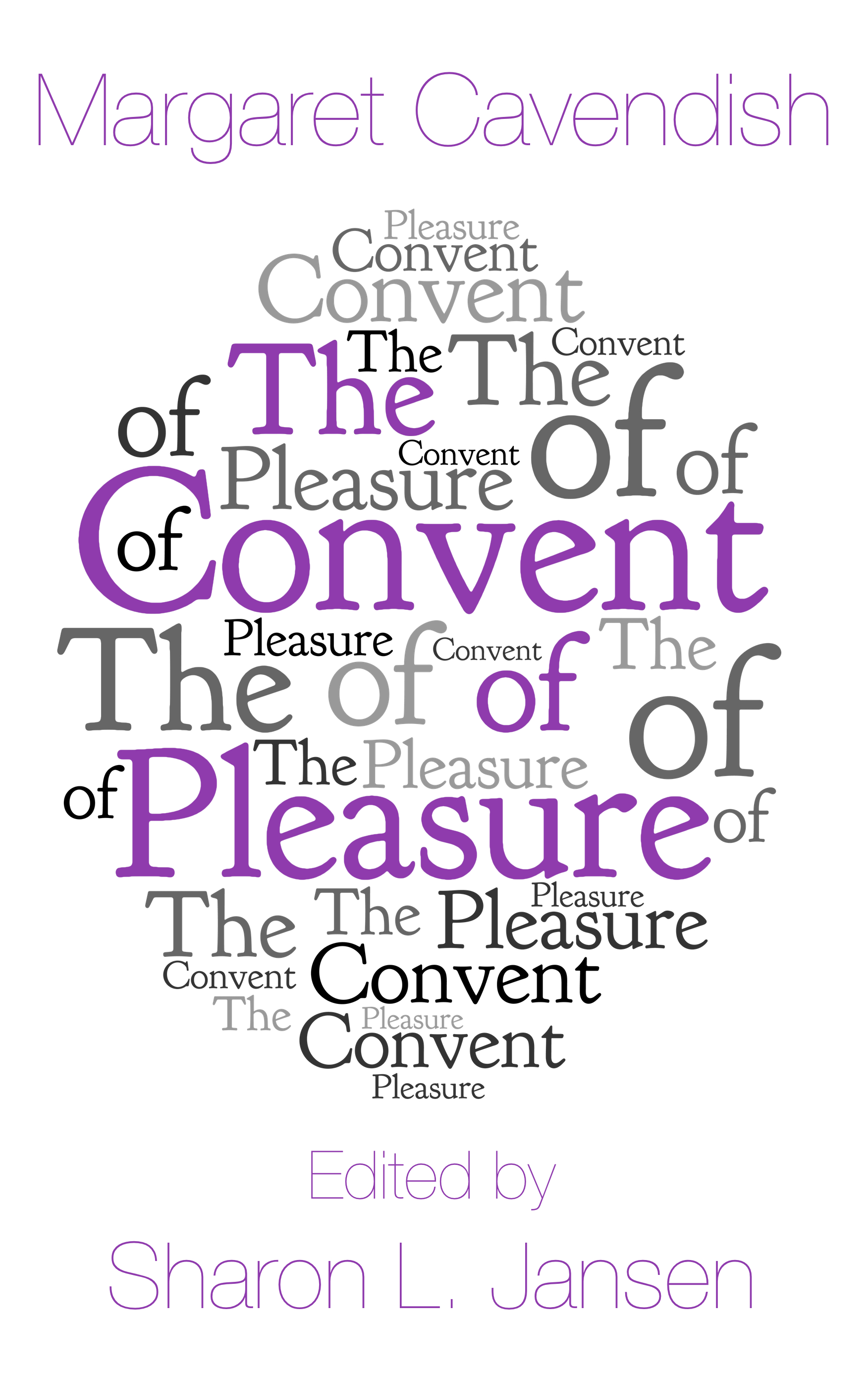
Cavendish was keenly aware that her plays were unlikely to be acted, at least in her lifetime, but that did not deter her. “To those that do delight in scenes and wit / I dedicate my book,” she writes in her dedication at the beginning of Plays.
As for the hard reality that her plays were not to be produced? She has an answer for that as well: “For all the time my plays a-making were, / My brain the stage, my thoughts were acting there.”
Today the most widely read of Cavendish’s plays is The Convent of Pleasure, from Plays, Never before Printed. In her provocative “comedy,” Cavendish presents us with the delightful Lady Happy, whose determined efforts to avoid men and marriage lead her to retreat into a convent dedicated to pleasure and provide Cavendish with the opportunity to expose the limited opportunities available to women in the late seventeenth century.
Now available, this edition, designed for classroom use, provides an ample introduction to Cavendish and her work, a carefully modernized text, with helpful glosses and notes, and a useful bibliography with references for further reading.
A preview of the contents is available for viewing, via Amazon's "Look Inside" feature; to access the preview, click here.
To purchase a copy, click here.
For bookstores and classroom use, connect with Saltar's Point by email: saltarspoint@gmail.com.
Also Available . . .
The first text to appear in this series is a new edition of Mary Astell's A Serious Proposal to the Ladies (1694).
I’ve taught Astell’s "serious proposal" many times over the years, and a surprising number of students with whom I’ve studied this text find reading it a transformative experience. I am never surprised when I get an e-mail message or a phone call from a former student who has just been reminded of Astell's Serious Proposal and wants to talk about it. But today, unfortunately, it is not so easy to read Mary Astell.
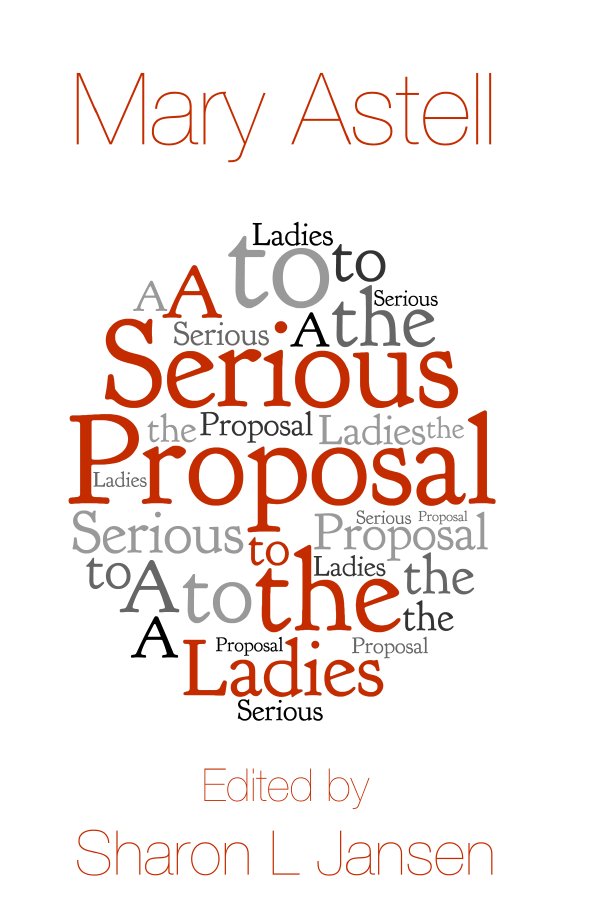 A few words about Astell's A Serious Proposal to the Ladies illustrate the difficulty. Only brief selections from Astell’s first and most influential published work are available online; more surprisingly, neither the venerable Norton Anthology of English Literature nor the Longman Anthology of British Literature includes even a brief selection from A Serious Proposal to the Ladies in their hundreds ofpages. Two other widely used college textbooks also avoid Astell’s first book; The Norton Anthology of Literature by Women includes only a very short passage from Astell’s Serious Proposal, the Longman Anthology of Women’s Literature a bit more, about four pages in total. Patricia Springborg’s excellent and affordable edition of A Serious Proposal to the Ladies, published by Broadview Press (2002) is widely available, but it reproduces the spelling, punctuation, and capitalization of Astell’s late seventeenth-century prose, and the introduction and textual notes focus her edition far more on the needs of the academic specialist than a student reader.
A few words about Astell's A Serious Proposal to the Ladies illustrate the difficulty. Only brief selections from Astell’s first and most influential published work are available online; more surprisingly, neither the venerable Norton Anthology of English Literature nor the Longman Anthology of British Literature includes even a brief selection from A Serious Proposal to the Ladies in their hundreds ofpages. Two other widely used college textbooks also avoid Astell’s first book; The Norton Anthology of Literature by Women includes only a very short passage from Astell’s Serious Proposal, the Longman Anthology of Women’s Literature a bit more, about four pages in total. Patricia Springborg’s excellent and affordable edition of A Serious Proposal to the Ladies, published by Broadview Press (2002) is widely available, but it reproduces the spelling, punctuation, and capitalization of Astell’s late seventeenth-century prose, and the introduction and textual notes focus her edition far more on the needs of the academic specialist than a student reader.
We encounter the difficulty in A Serious Proposal at the very outset. Astell opens her "proposal" using the familiar greeting of the personal letter—“Ladies,” she begins, and we feel immediately comfortable. But after that simple and direct greeting, inviting us to continue, we are confronted by a formidable chunk of prose, an opening paragraph of some 400 words. Here are the first few lines of Astell’s opener in their original 1694 form:
Since the Profitable Adventures that have gone abroad in the World, have met with so great Encouragement, tho’ the highest advantage they can propose, is an uncertain Lot for such matters as Opinion (not real worth) gives a value to; things which if obtain’d, are as flitting and fickle as that Chance which is to dispose of them. I therefore persuade my self, you will not be less kind to a Proposition that comes attended with more certain and substantial Gain; whose only design is to improve your Charms and heighten your Value, by suffering you no longer to be cheap and contemptible.
For today’s reader, this passage presents a daunting obstacle. No currently available edition of A Serious Proposal to the Ladies addresses the complication of Astell’s prose—the sentence structure, the vocabulary, the punctuation, the spelling, the oddities of capitalization. The texts of Astell’s contemporaries—Daniel Defoe’s Robinson Crusoe or Moll Flanders, for example, or Jonathan Swift’s Gulliver’s Travels—come to us in carefully edited and annotated "normalized" versions inviting readers into the prose, offering them every aid to ease their task. But there is no comparable treatment of Astell. I’ve read a dozen or more online and print versions of this opening passage, and not one of them edits Astell’s prose for a modern reader. Not one of them even provides a gloss for Astell’s reference to “profitable adventures.”
Readers are thus discouraged in their encounters with Astell, not because she is too difficult for them, much less irrelevant to them, but because the conventions of writing have changed so much between the seventeenth century and the twenty-first, and readers aren’t given the tools they may need to deal with Astell’s prose. Thus my efforts to produce a readable (for the twenty-first century student) introduction to A Serious Proposal to the Ladies.
In preparing Astell's text for this new edition, I have preserved her paragraphing and sentence structure while normalizing the seventeenth-century spelling, punctuation, and capitalization. This new edition is also amply provided with both glosses and explanatory notes.
For a preview of the Table of Contents, click here.
For a preview of the Introduction, click here.
To purchase a copy, please click here.
For bookstores and classroom use, connect with Saltar's Point by email: saltarspoint@gmail.com.
This Saltar's Point edition of A Serious Proposal to the Ladies is now available in a Kindle edition! To purchase and download, please click here.
And . . .
The second text to be published in the new Saltar's Point series is Mary Astell's Some Reflections upon Marriage (1700):
Throughout her life, in her personal relationships as well as in her role as a public intellectual, the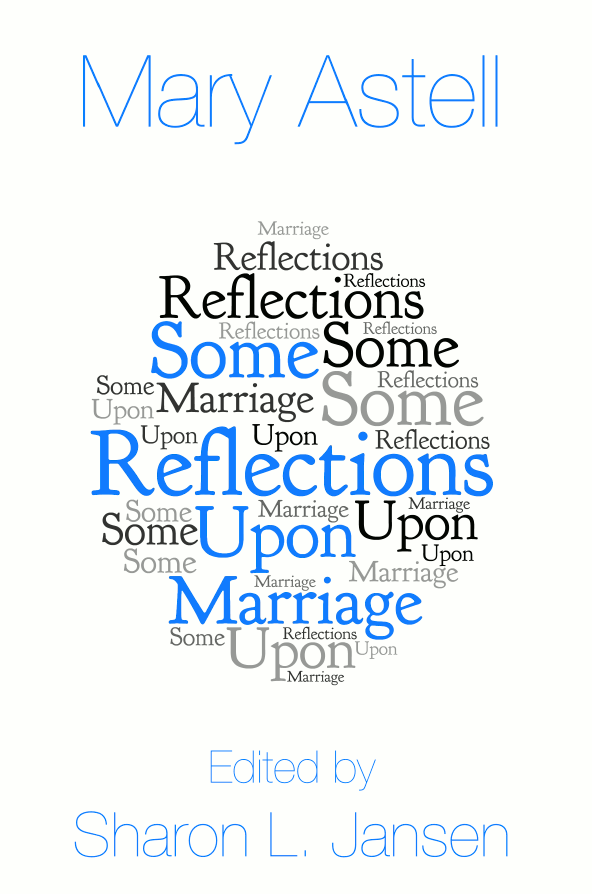 English thinker Mary Astell (1666-1731) supported women, wrote to and for women, and, to the greatest extent possible, moved from advocacy to action on their behalf. In Some Reflections upon Marriage (London, 1700), Astell focused her attention on the institution of marriage. For Astell, marriage is a divinely ordained state, a “Christian institution,” the only way to perpetuate humankind. But, she asks, “if marriage be such a blessed state, how comes it . . . there are so few happy marriages?” When her analysis is complete, there is not much to recommend the institution, at least from a woman’s perspective. Marriage is necessary since it represents “the only honorable way of continuing mankind.” But, as Astell observes, the woman who marries “ought to lay it down for an indisputable maxim that her husband must govern absolutely and entirely and that she has nothing else to do but to please and obey.” Her radical conclusion? If she cannot accept marriage “as it truly is,” then a woman might choose not to marry: perhaps, Astell suggests, “it is not good for a woman to marry.”
English thinker Mary Astell (1666-1731) supported women, wrote to and for women, and, to the greatest extent possible, moved from advocacy to action on their behalf. In Some Reflections upon Marriage (London, 1700), Astell focused her attention on the institution of marriage. For Astell, marriage is a divinely ordained state, a “Christian institution,” the only way to perpetuate humankind. But, she asks, “if marriage be such a blessed state, how comes it . . . there are so few happy marriages?” When her analysis is complete, there is not much to recommend the institution, at least from a woman’s perspective. Marriage is necessary since it represents “the only honorable way of continuing mankind.” But, as Astell observes, the woman who marries “ought to lay it down for an indisputable maxim that her husband must govern absolutely and entirely and that she has nothing else to do but to please and obey.” Her radical conclusion? If she cannot accept marriage “as it truly is,” then a woman might choose not to marry: perhaps, Astell suggests, “it is not good for a woman to marry.”
Despite the importance of Some Reflections upon Marriage, no previous edition has addressed the complications of Astell’s prose style, and none has added the kind of glossing and notes that will assist student readers in their engagement with her distinctive voice. This edition, designed for classroom use, provides an ample introduction, a carefully modernized text, helpful glosses and notes, and a useful bibliography with references for further reading.
For a preview of the table of contents, click here.
To search inside this book, click here.
To purchase a copy, please click here.
For bookstores and classroom use, connect with Saltar's Point by email: saltarspoint@gmail.com.